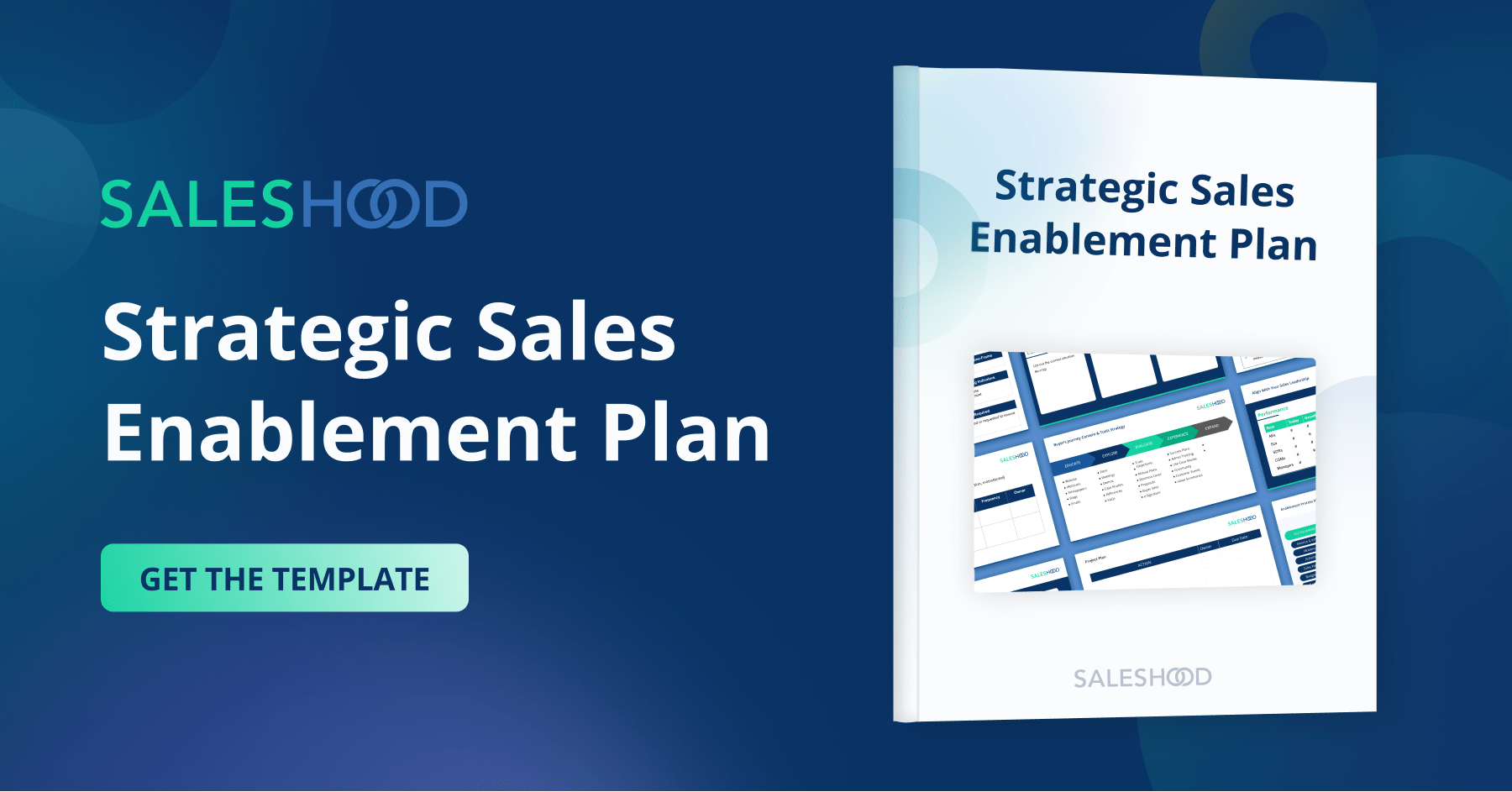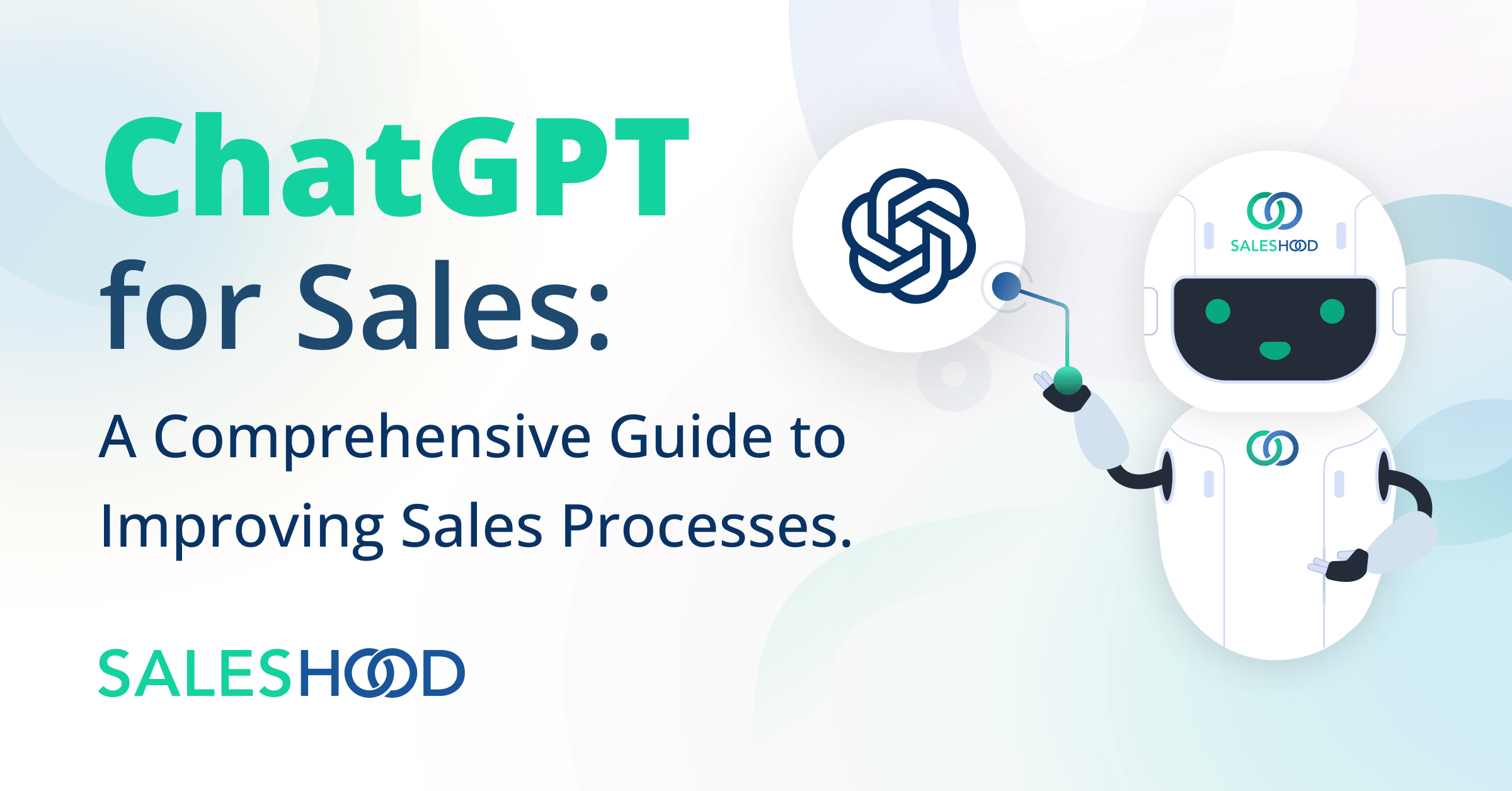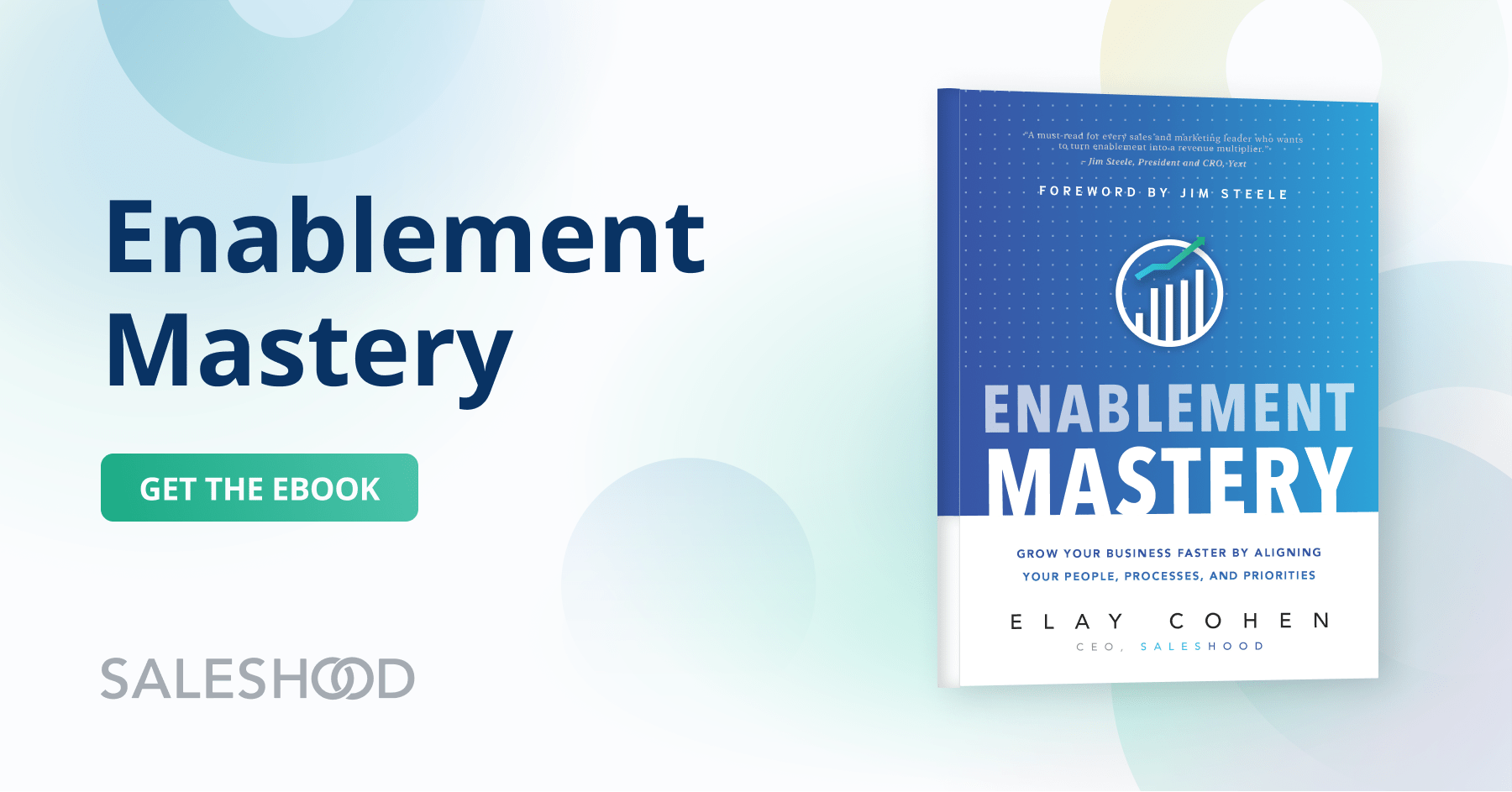It’s no secret that being a sales enablement team of one is challenging, but how do you drive change on your own? For any sales enablement initiative to thrive, you have to be strategic and stay true to your purpose, and that’s easier said than done. However, the right approach and mindset can make all the difference.
It can be fun and rewarding to create effective enablement programs that help drive revenue growth and measurable results. We’re here to show you how to make that happen. Using the insights in this blog will help you succeed as a solo enabler.
5 Steps to Thrive as Sales Enablement Team of One
Not sure where to start as you kick off or manage your company’s sales enablement program? Follow these steps to make the process easier and get more valuable work done.
Step 1: Be Strategic in Your Vision
To be effective as a solo enabler, you need to have a strategic vision and engage with your stakeholders. Strategic engagement requires you to communicate in the language that resonates with your audience and speak to their motivations.
For example, when speaking with C-level executives, focus on topics such as go-to-market strategy, scaling, goals, and expectations. Help them understand how and why sales enablement is an important piece of the revenue growth puzzle for your organization.
Your executives serve as the key “investors” for the enablement function. By thinking through the results aligned with their key business objectives, you will earn both trust and authority that will help you down the line.
That said, C-level executives aren’t the only ones that you need to share your vision with. Marketing, product, and sales operations teams generate valuable resources such as processes, content, messaging, and reports that should be adopted by sales and success teams. Leveraging the content these teams create is an essential part of building a successful sales enablement strategy.
However, this content may not always be easily understood or seem relevant to sales. In fact, 76% of content marketers forget about sales enablement in their marketing efforts. If they’re reminded of the strategic efforts, your marketers can provide more useful content, as well as the context that sales needs.
To ensure content consumption and understanding, implement strategies that help these teams generate content that’s applicable to the sales process. Then, make sure your reps know how to access it.
Understand how you can make your sales team members the most successful they can be in their roles and careers moving forward. By listening to their needs, goals, and motivations you can make your sales enablement programs more effective and impactful for them, which leads to higher adoption and improved metrics, flowing all the way up to your executive’s priorities.
Step 2: Establish a Sales Enablement Charter
A charter can help you achieve success by providing structure and ensuring that everyone is aligned. This is particularly important if your company is just getting started with sales enablement or if you’re implementing big changes.
Your charter should define your objective, scope, target audience, sales enablement goals, and how your success will be measured. Be specific about your metrics and KPIs, and know that you can adjust as needed. Your charter can act as a guiding principle, like a North Star.
Remember that while generating revenue is the number one goal, there are also other important goals to consider. According to a CSO Insights Sales Enablement Study, the top ten sales enablement goals in addition to driving revenue are:
- Increase win rates for forecast deals
- Increase new account acquisition
- Increase existing account penetration
- Improve customer experience/reduce churn
- Increase available selling time
- Reduce sales cycle length
- Decrease new person ramp-up time
- Increase average deal size
- Reduce sales force turnover
- Reduce the cost of sales
Creating a charter allows you an opportunity to secure buy-in and consensus from your stakeholders and collaborators, define success criteria, and manage expectations. It serves as the foundation for the rest of the work you do.
Step 3: Realize Solo Sales Enablement is Anything but Solo
Being a solo enabler may seem challenging and overwhelming, but it’s important to remember that you are not alone. Other teams and stakeholders are there to collaborate with you. What you need to focus on are ways to get the ball rolling, including:
Bridge the gap between teams: Work with your product, marketing, and operations teams for content, collateral, and even recorded or hosted training sessions.
Leverage subject matter experts: Don’t be afraid to delegate and leverage subject matter experts for content, training, and feedback.
Lean on frontline managers: Managers play a crucial role in program adoption, completion, and coaching. Ask them for support and collaboration in implementing your programs and ensuring their success.
Sales enablement truly is a team sport. You may start as a team of one and be the leader of this initiative, but each player has their own role to take on. When everyone is working together, the results for your organization can be much greater.
Step 4: Maximize and Scale Your Sales Enablement Programs
When you’re a solo enabler, it can be challenging to quickly maximize and scale your programs without a dedicated team behind you to help with the heavy lifting. You have the knowledge to develop and deliver effective sales enablement programs, but how do you turn that knowledge into reality?
There are several ways to lift that burden and make it easier. Here are some tips that will help you as you find ways to push your sales enablement program forward.
Use sales technology wisely: Saleshood’s all-in-one sales enablement software can help you onboard and ramp new sales reps faster, easily manage sales content, guide your teams to sell more effectively, scale sales pitch practice, and easily measure revenue impact.
Document your efforts: Having a clear record of your sales processes, sales training materials, and information on buyer interactions ensures that important details don’t fall through the cracks.
Turn to turnkey programs and sales content: Creating sales enablement content from scratch can be a time-consuming process. Leveraging your existing resources will streamline your efforts and minimize duplicated work. Plus, it will establish consistency, so all members of the sales team are on the same page.
Keep things organized: Store everything in a central place and have it easily accessible to others. Make it simple for everyone to find the resources they need, when they need them.
Revisit your enablement charter: The charter you created can help you focus your efforts on what is most important and prioritize your work. If you’re ever wondering what to do next, return to it for guidance.
Consider the sales enablement maturity model: Familiarize yourself with the enablement maturity model to understand where your company stands and what your team’s priorities should be.
You may be running these operations solo, but you can still get a lot done by focusing on the right factors. These tips can all help you as you work to optimize sales processes and improve revenue.
Step 5: Most Importantly: Build Trust and Relationships
Establishing trust and a solid relationship with your teams and stakeholders is the key to the success of your enablement programs. When the people you work with feel valued, respected, and heard, they are more likely to support you and contribute.
How do you build that trust?
Be true to yourself and honest in your approach. Take responsibility if things are not working as planned, and make data-driven decisions and changes when necessary. Clear and open communication is vital, and that means sharing both the good, the bad, and what you’re doing to overcome obstacles.
Also, keep an open dialogue and give them the opportunity to contribute. Involve teams and stakeholders in the decision-making process when it makes sense for their goals. Also, ask for their thoughts and their feedback. This can help ensure that everyone is invested in your enablement efforts.
Being strategic, and impactful will definitely get you a seat at the table. But don’t forget that building your relationships and trust is what will keep you there. By demonstrating your commitment to enablement, along with your willingness to listen to and address the concerns of others, you can foster a positive and productive working relationship.
Create a Sales Enablement Program that Delivers Measurable Results
It’s much easier for everyone to be on the same page when there’s a plan that covers what you want to accomplish. Grab our Strategic Sales Enablement Program Template to take the guesswork out of making your vision clear and create a plan with metrics that are aligned with your company’s top priorities.
If you want to take the next step and learn how to enable your teams with modern sales training, sales coaching, and content management, talk to one of our sales enablement experts.
SalesHood powers fast-growing companies with our purpose-built, all-in-one sales enablement platform by activating revenue teams to improve sales effectiveness and sales efficiency.
Get more great sales enablement insight by making one of these posts your next read:
How To Build A Sales Enablement Strategy
Sales Enablement KPIs: How to WOW the C-Suite
6 Pillars Of Intentional Sales Strategy And Sales Enablement




